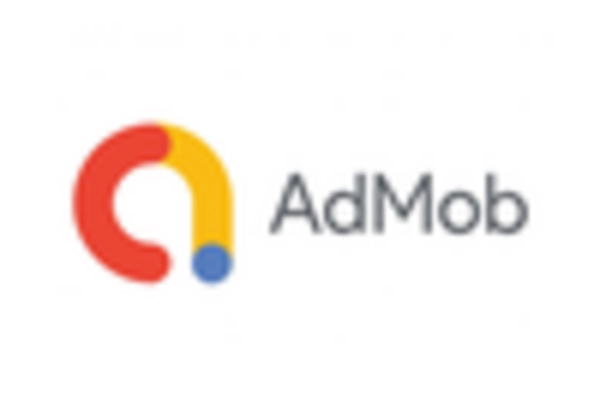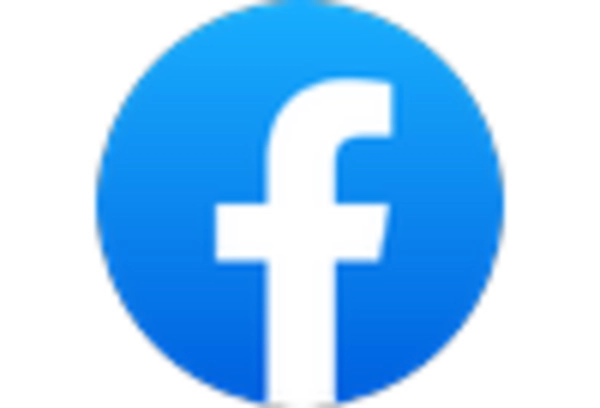Rising Mobile Usage
The increasing prevalence of mobile devices in daily life is a primary driver for the in app-advertising market. As of November 2025, mobile devices account for over 50% of all internet traffic in the US, indicating a shift in consumer behavior towards mobile-first interactions. This trend suggests that advertisers are increasingly allocating budgets to mobile platforms, with projections indicating that mobile ad spending could reach $100 billion by 2026. The in app-advertising market benefits from this shift, as users spend a significant portion of their time within applications, creating a fertile ground for targeted advertising. Furthermore, the convenience and accessibility of mobile apps enhance user engagement, making them an attractive channel for advertisers aiming to reach their audience effectively.
Emergence of New Ad Formats
The introduction of innovative ad formats is a significant driver for the in app-advertising market. As user preferences evolve, advertisers are exploring new ways to engage audiences beyond traditional banner ads. Formats such as interactive ads, rewarded video ads, and native advertising are gaining traction, appealing to users' desire for more engaging content. As of November 2025, interactive ad formats have shown to increase user engagement rates by up to 30%, indicating their effectiveness in capturing attention. This trend suggests that advertisers are likely to invest more in these emerging formats, as they provide opportunities for deeper interaction and brand connection. The in app-advertising market is thus positioned to thrive as it adapts to these changing consumer preferences and technological advancements.
Advancements in Data Analytics
The evolution of data analytics technologies is transforming the in app-advertising market. Enhanced data collection and analysis capabilities allow advertisers to gain deeper insights into user behavior and preferences. As of November 2025, approximately 70% of marketers in the US utilize advanced analytics tools to optimize their advertising strategies. This trend indicates a growing reliance on data-driven decision-making, which can lead to more effective ad placements and improved return on investment (ROI). The ability to analyze user interactions in real-time enables advertisers to tailor their campaigns dynamically, ensuring that the right message reaches the right audience at the right time. Consequently, this advancement in analytics is likely to drive increased investment in the in app-advertising market, as businesses seek to leverage data for competitive advantage.
Increased Focus on Privacy Regulations
The growing emphasis on privacy regulations is influencing the strategies within the in app-advertising market. With the implementation of stricter data protection laws, such as the California Consumer Privacy Act (CCPA), advertisers are compelled to rethink their data collection and usage practices. As of November 2025, compliance with these regulations is paramount, as non-compliance can result in substantial fines. This shift indicates that advertisers are likely to invest in privacy-centric advertising solutions, which may include enhanced transparency and user consent mechanisms. While this presents challenges, it also offers opportunities for the in app-advertising market to build trust with consumers. By prioritizing user privacy, advertisers can foster stronger relationships with their audience, potentially leading to increased engagement and loyalty.
Shift Towards Programmatic Advertising
The transition to programmatic advertising is reshaping the landscape of the in app-advertising market. This automated approach to buying and selling ad space allows for more efficient and targeted advertising strategies. As of November 2025, programmatic advertising accounts for nearly 80% of all digital ad spending in the US, highlighting its dominance in the market. This shift suggests that advertisers are increasingly favoring data-driven methods to reach their audiences, as programmatic platforms enable real-time bidding and precise targeting. The in app-advertising market stands to benefit from this trend, as programmatic solutions facilitate the delivery of personalized ads to users based on their behavior and preferences. This efficiency not only enhances user experience but also maximizes the effectiveness of advertising campaigns.

















Leave a Comment